One aspect that is often underrated when it comes to signing a sports sponsorship deal is selecting the right time to sign a sports sponsorship.
The average sports sponsorship negotiation time is around 6 months, mainly because of the sponsor's internal structure and processes. Therefore, it is an activity that needs to be carefully planned, also because sports properties have their deadlines as well.
When a new sponsor is coming in, sports teams have to adjust marketing collaterals, branding layout and the overall plan for the promotional activities for the year.
That’s why we always advise our clients to engage in a negotiation very early on, so they have the chance also to know the team, understand the sponsorship assets, experience as a guest what a race weekend can look like and then take a decision with all the cards on the table.
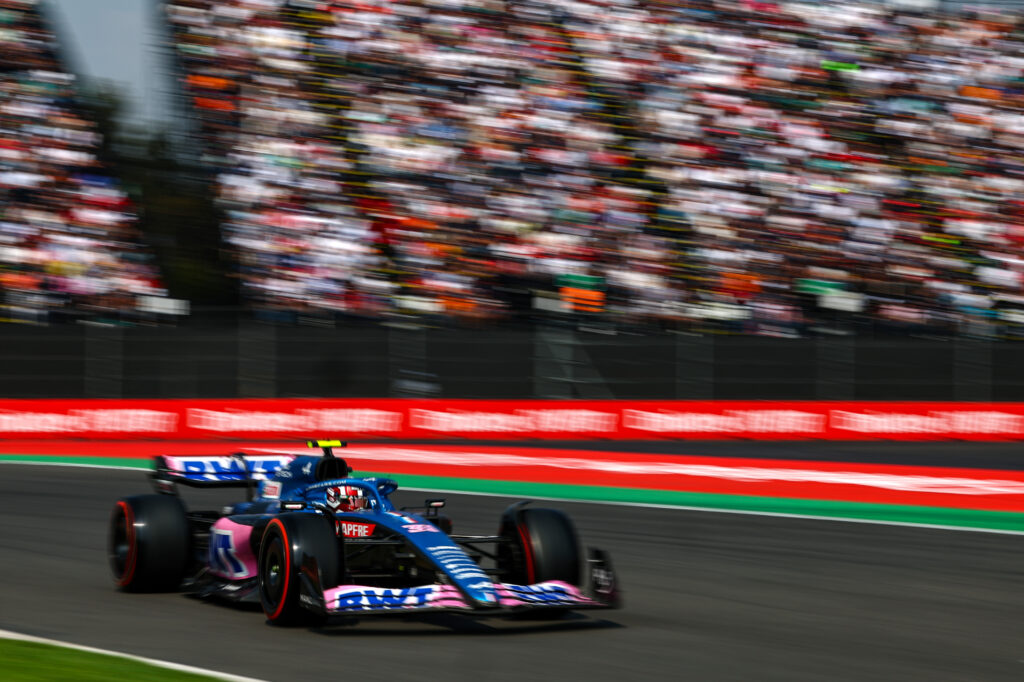
Most importantly, agreeing on a sponsorship deal at the right time gives the sponsor and team the opportunity to plan together how to activate the partnership from the very first day.
It is not rare to see sponsorship deals signed a few days from the start of the championship, but then it takes weeks (if not months) to leverage the partnership effectively.
Conclusively, when is the right time to sign a sponsorship deal? We advise engaging with the team 8-9 months before the next championship start and to sign the deal at least 2-3 months before the first race.
This is original editorial content from Drive Sports Marketing, an agency specialising in Formula 1 sponsorship, Formula E sponsorship, MotoGP sponsorship, and WEC sponsorship.
When we talk about sponsorship in motorsport, meaning all the categories that make it up, it is correct to go beyond the surface of sponsorship and understand what benefits it offers to those who sponsor a team.
We are not only and exclusively referring to the logos on the car/bike, but to everything that concerns an entire company, its values, and its history, without forgetting all the people who work within it, from the CEO to the workers.
Starting with what immediately comes to mind in the eyes of the public, namely the logo positioned on the vehicle, we can say that its position is extremely relevant and we should not be fooled by its size or where it is positioned: if we look at Formula 1, areas such as the halo or the head-rest, although small, are very strategic and generate lots of media value because being often well-framed, they make the sponsor's logo very visible and defined. This is part of what is known as branding, i.e. all those strategies and activities that make a particular brand recognisable and distinguishable from direct competitors. In addition to this, if you want to push not only the association with a team but also with a driver/rider, branding the helmet is a winning choice and one that can make all the difference.
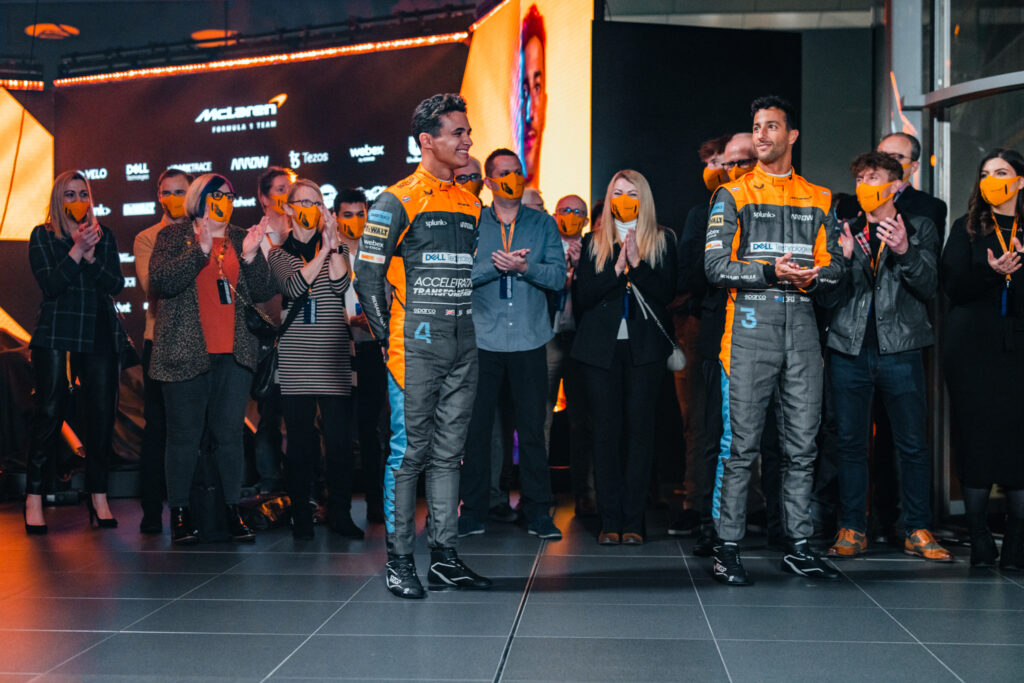
What is the biggest dream for a motorsport fan? Having a pass to the paddock to get up close, meet, and take pictures with the drivers he/she sees racing on TV almost every weekend. Well, this is all part and parcel of the benefits that come with a sponsorship: passes for access to the paddock, but also those for access to VIP hospitality (MotoGP VIP Village and F1 Paddock Club to name a few) and their fan zones, are a great way to involve not only the executives of the sponsoring company but also as a reward for the company's employees or business associates.
Remaining in the driver sphere, a motorsport sponsorship agreement allows access to them to produce multimedia content, or it is possible to request their presence as guests at corporate events or during events where fans are also expected to attend.
A final benefit conferred by a motoring sponsorship, certainly not in terms of importance, is access to the factory of the sponsored team: inside it will certainly be possible to try out simulators or experience firsthand how a pit stop works, but it will also be possible to use a meeting room to hold company meetings in a different and perhaps more stimulating environment than the usual and classic meeting room of the company itself.
Once we understand how important and effective sponsorship benefits are, there is nothing left to add except that an agency specialising in sports sponsorship is very often needed to help the prospective sponsor select the best benefits according to its needs and mindset.
This is original editorial content from Drive Sports Marketing, an agency specialising in Formula 1 sponsorship, Formula E sponsorship, MotoGP sponsorship, and WEC sponsorship.
The world of sports sponsorships, but the world of sports in general, as we can easily imagine, follows the global economic, social and environmental trends very closely and reflects the changes, one example is the technology sponsorships in motorsport.
It is in the last two years that, due to the Covid-19 pandemic, the greatest changes have taken place: among these, there is an acceleration of the use of digital services, to which so many people around the world, both for work and personal reasons, have turned to. It is no coincidence that the use of digital technologies and software has increased significantly: consider that Zoom, a video calling software, in 2020, the first year of the pandemic, increased its turnover by 326% compared to the previous year.
How can this be linked to sponsorships in the world of sport and motorsport in particular? Looking at motorsport sponsorships in Formula 1, it can be seen that the championship and all the teams now have sponsorship relationships with technology brands: these are of the most diverse nature, from video calling software to cloud services via cybersecurity, and with brands linked to cryptocurrencies and blockchain. A reason why is that the technological innovations tested by the various teams are then reused and adapted to other contexts, such as urban transport or even the field of medicine.
Starting with the aforementioned Zoom, this well-established brand has signed a multi-year partnership agreement directly with the Formula 1 Championship, but its direct competitor, Webex, is no different, having signed a partnership agreement with McLaren in 2020. It must be added that these video call systems have also proved essential for the teams, who have been able to use them to allow their drivers to interact with fans and to give virtual garage tours to those guests who should have been present at the Grand Prix but could not be there due to Covid-19 restrictions limiting the number of people in the paddock.
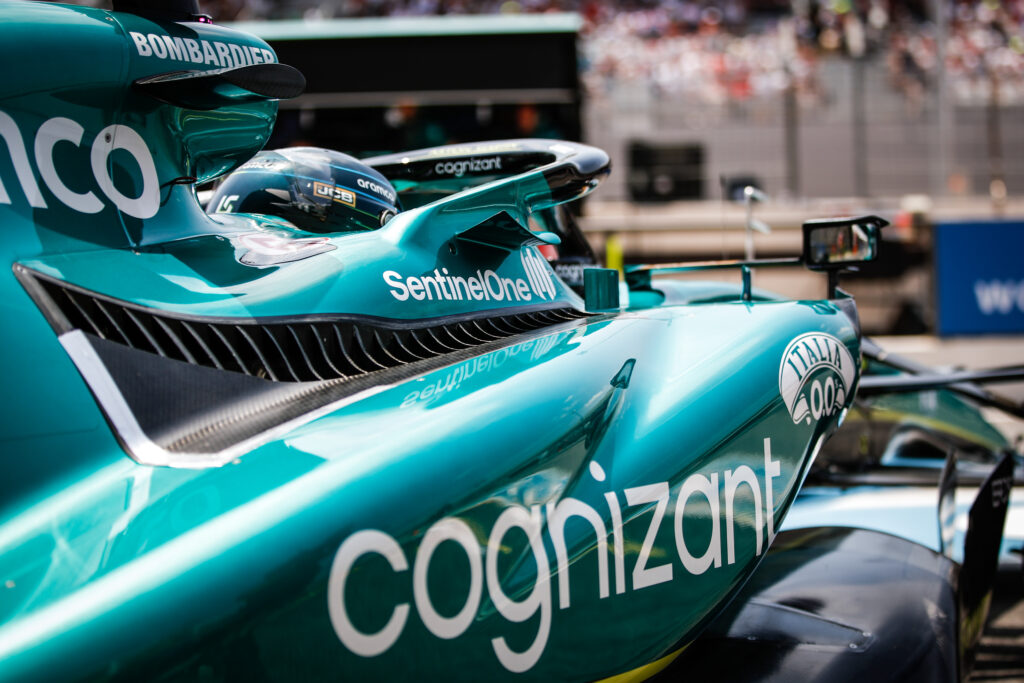
Cloud computing is also now more than present in the Formula 1 circus: since 2018, Formula 1 has started to move a large part of its IT infrastructure to the AWS Cloud (Amazon Web Services) to monitor race strategies, better track data and digital transmissions, and the same thing has been done by the teams, who have equipped themselves with other cloud systems such as Google Cloud (McLaren), Ionos (Haas) and Cognizant (Aston Martin).
Hand in hand with cloud computing, which is a key resource for any type of business given its agility, resilience, and speed of development, there is cybersecurity: those tools and technologies, such as Mandiant (Alpine), Sentinel One (Aston Martin) and Darktrace (McLaren), aimed at protecting computer systems and all the data they contain from hacker attacks, are increasingly demanded and used by companies, whether small or large.
But what about other high-profile motorsport competitions such as Formula E and MotoGP, direct competitors of Formula 1? In Formula E, the number of sponsorships in the technology sector is extremely low, almost non-existent, a sign of a championship that focuses more on sponsorships linked to renewable and sustainable sources. On the other hand, the teams of the MotoGP championship, which has innovation as its cardinal value, are increasingly turning to companies operating in the technology sector, as already demonstrated by those sponsorships in the fields of cloud (Aruba for Ducati) and cybersecurity (Kaspersky for Aprilia Racing).
The technology sector is therefore confirmed as a major player in motorsport, but not all series and championships are yet able to exploit its full potential in terms of sponsorship.
This is original editorial content from Drive Sports Marketing, an agency specialising in Formula 1 sponsorship, Formula E sponsorship, MotoGP sponsorship, and WEC sponsorship.
A very recurring topic in recent years is global warming caused by humans and their activities with the relationship between motorsport and sustainability becoming increasingly important.
This problem, with the consequent criticisms and attempts to run for cover, has not spared the world of sport, in particular motorsport, which has always been accused of emitting more carbon dioxide due to the use of racing vehicles, although studies indicate that these emit only 1% and that over 70% of CO2 emissions are due to logistics and travel, a factor common to many sports.
As a result, sponsoring companies pay more and more attention to the sustainability of a particular sport before investing large sums of money. The ball then passed to the leagues and to the teams who had to develop sustainability strategies and programs to meet the needs of potential sponsors. And in this sense, which of the two top motorsport series is doing better?
Now in its eighth edition, over time Formula E has made some changes not only from a technical point of view and therefore related to the cars, such as improvements to the electric batteries in such a way as to compete an entire E-Prix with only one battery, but also from an environmental point of view: in the first four seasons the series implemented a recycling program for all first-generation Li-Ion batteries. Since 2018, however, it has begun to tackle the problem of disposable plastic bottles by installing water dispensers during events. Finally, in 2021, it pioneered the recycling of carbon fibre from broken car parts.
All this, together with the right measurement and offsetting of carbon emissions, has allowed it to become the first sports championship entirely recognized as carbon neutral.
The Formula E Championship, at the forefront of sustainability, in its short course of life has already been awarded multiple certifications at a global level: in 2020 it was awarded three stars for environmental sustainability by the FIA (International Automobile Federation), while in 2021 it obtained the ISO20121 certification (management standard for the sustainable organization of events) and received the highest score from what is the first and only sustainability index, the "Sustainable Motorsport Index" created by Enovation Consulting which examines 106 international motorsport championships.

But what about the best-known and most-followed Formula 1? Always considered the least sustainable championship, in recent years it has made great strides in this field, so much so that it was awarded three FIA stars in 2021, also thanks to the hard work of the various participating teams, who seem to have taken the issue of sustainability very seriously.
In addition, the series has set itself a very ambitious goal, namely the achievement of a zero-emissions level by 2030. This goal goes beyond the technology of car engines but also concerns the total reduction of the waste of resources on track and logistics optimization. In fact, from 2023 the races will be grouped by continent, to avoid frequent trips from one side of the globe to the other.
However, sustainability is not only environmental but also social. It should be emphasized that both Formula 1 and Formula E have developed very interesting projects, such as: “F1 in Schools”, “Girls on Track” and “Project Pitlane”. Projects that aim to bring young people closer to the study of science subjects, to bring girls into contact with a world historically with a male connotation, and the development of 20,000 NHS ventilators during the pandemic.
In the "Enovation Consulting's sustainability index", Formula 1 took second place, just behind its "cousin" Formula E, but the imminent arrival of other car manufacturers and the ongoing sustainability strategy with the use of 100% biofuel from 2025 suggests that, within a few years, the positions could align and Formula 1, thanks also to the ever-growing and vastly superior audience to Formula E, could be the place to be.
If you are interested in understanding more about how your company can align with motorsport and sustainability, give us, at Drive, a call.
This is original editorial content from Drive Sports Marketing, an agency specialising in Formula 1 sponsorship, Formula E sponsorship, MotoGP sponsorship, and WEC sponsorship.
If in the 80s and 90s Formula 1 teams were fighting for the biggest sponsorship in the tobacco industry, long banned due to its negative effects on people and the environment, now they are still looking for the most remunerative sponsorship in the world that's why we are talking about the relationship between cryptocurrencies and Formula 1.
Taking a small step back, it is useful to explain what cryptocurrencies actually are: these are digital currencies, think of the most famous Bitcoin, used in virtual transactions, recorded in decentralised ledgers called blockchains.
Their relevance to the world of Formula 1 is confirmed by the fact that Crypto.com, a cryptocurrency exchange platform, has entered into a partnership agreement with Liberty Media, becoming a Global Partner of F1.
On the team side, by now almost all Formula 1 teams have signed sponsorship agreements with companies in cryptocurrencies and their derivatives (NFT, blockchain): only Haas and Williams are missing, but one imagines they will be added to the list soon. Instead, Aston Martin was the first team to decide to operate a sponsorship in this sector, signing an agreement with the aforementioned Crypto.com in March 2021. On the other hand, Red Bull Racing closed the largest sponsorship deal in the cryptocurrency sector with ByBit: we are talking about a rumoured $150 million over three years.

More specifically, in which sectors are cryptocurrencies most used? This is a legitimate question, if you think, for example, of the strategy implemented by Alfa Romeo, which has decided to make its way into the world of decentralised finance with a partnership with Floki.
But there is more: the world of cryptocurrencies has even revolutionised the sport-fan relationship. A further milestone is that with cryptocurrencies, it is possible to buy NFTs (Non-Fungible Tokens), i.e. certificates of ownership for digital goods. Mercedes, for example, has chosen FTX, a cryptocurrency exchange, as a trading partner, through whose app it is possible to buy NFTs related to the Mercedes brand and the world of Formula 1.
This recent indissoluble link between Formula 1 and cryptocurrencies brings with it problems of no small relevance: while the Formula 1 world is constantly seeking to become greener, the world of cryptocurrencies does not seem to want to follow in its footsteps. Cryptocurrencies, to be created, currently require a process called 'mining', which consumes a lot of energy and releases carbon dioxide. In addition, cryptocurrencies are not yet well regulated from a financial and consumer protection point of view worldwide.
However, at least for the time being, nobody seems to be too concerned about it. On the contrary, everyone is betting on the financial potential of the cryptocurrency world. And if you are interested to know more, give us at Drive a call.
This is original editorial content from Drive Sports Marketing, an agency specialising in Formula 1 sponsorship, Formula E sponsorship, MotoGP sponsorship, and WEC sponsorship.
Is it possible to recreate a casual clothing line inspired by motorsport? We asked Gabriele Pedone, CEO of Racing Spirit, the clothing brand of the Racing Force Group, which already includes iconic motorsport brands such as OMP and Bell.
Can you tell us the story of Racing Spirit and how the idea of founding this clothing brand came about?
The story began in 2012 by a nice coincidence when, as OMP, we recreated with costume designers the suits of the drivers who participated in the 1976 championship for the production of the film "Rush", directed by Ron Howard.
Towards the end of the production, given the success we were having with the suits and helmets, we were asked if we could also produce some garments for the mechanics in the movie: this is where we started the Racing Spirit project, which, in 2018, was then transformed into a company dedicated to motorsport-inspired clothing.
In your opinion, what is it about Racing Spirit garments that make them stand out from others on the market?
There's a huge choice of fabrics and fabric technologies on the market, but no one has ever considered or developed this aspect with a dedicated brand in the motorsport sector. We have applied those technologies and our experience from motorsport to create this brand of technical yet casual clothing that would meet the needs of our consumers.
Are you planning to create a clothing line that is not so much casual, but more elegant and that follows the fashion world, or do you prefer to stay on the more casual style at the moment?
At the moment we want to focus on what we do well and what we understand well, which is motorsport, so obviously, the next step is to expand our target audience but to create sportswear, not fashion. We feel closer to brands like Patagonia, North Face, Colmar, North Sails, and Quicksilver rather than to pure fashion brands like Stone Island, Napapijri, or AlphaTauri.
What are your short-term objectives in terms of brand strategy and how do you intend to position yourself in the market?
The short-term goal is to further establish ourselves in the motorsport industry. We tell a true story, our brand is born from two established motorsport brands: Bell, born in 1954, and OMP, born in 1973.
We want to build on our heritage, make Racing Spirit even more recognizable in our world, and then move out of this sector to hit a wider target audience with inspirational sportswear.
As a company, we focus a lot on our WHY: we are passionate about the sport, we are highly involved in the sport and we want to turn all the experiences motorsport has given us into something new. As in motorsport, where everything is well planned and detailed, our products are designed down to the smallest detail to ensure that our consumers get great performance with highly functional and aesthetically pleasing products.
This is original editorial content from Drive Sports Marketing, an agency specialising in Formula 1 sponsorship, Formula E sponsorship, MotoGP sponsorship, and WEC sponsorship.
Quoting Bruce Springsteen, for many years sponsorship experts have defined the early 2000s as the glory days of F1 sponsorship when tobacco and financial companies were investing tens of millions in the sport. Today, after a decade of struggles for F1 teams to sign big deals, we are witnessing a new F1 sponsorship golden era and the main players are without a doubt technology companies, but they are not the only ones.
We have already discussed in another article why technology companies are investing so heavily in the sport, but why this is happening now and why F1 is attracting again brands from a variety of sectors?
Digital Channels: since the acquisition by Liberty Media, Formula 1 has become the fastest-growing sport on digital channels and today has 49.1m total followers and has seen the highest engagement rate with social posts compared to other major sports in 2021.
New Narrative: Opening up social media channels and the creation of behind-the-scenes content has given the sport the opportunity to take the narrative to another level. In this way, fans around the world got to know the challenges, complexities and peculiarities of the sport, while companies have discovered so many brand stories they can tell using Formula 1 as a platform.
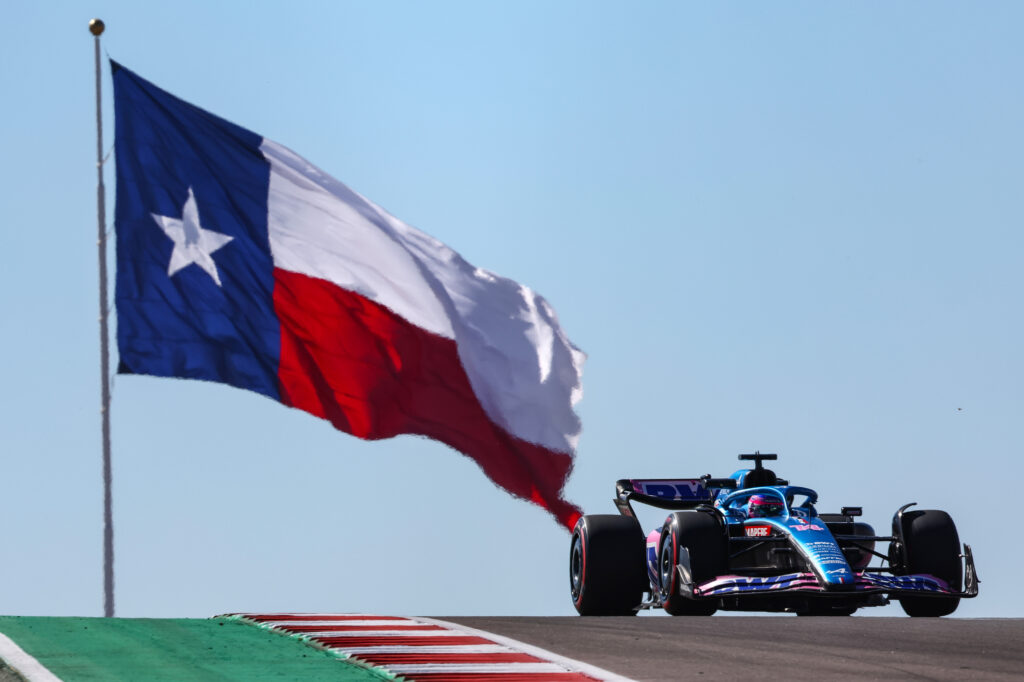
Growing Markets: As a consequence, there have been significant rises in the last season's cumulative audience in several markets, including many of F1's biggest markets. The Netherlands stood out with an increase of +81% Year on Year, but there were also significant gains in the USA (+58% YoY), France (+48% YoY), Italy (+40% YoY) and the UK (+39% YoY).
Real Sustainability: Formula 1 is effectively making giant steps to make the sport more sustainable as possible: F1 cars have already a hybrid engine and they are way more efficient than our road cars, additionally they utilised E10 fuel, a mixture of 90% fossil fuel and 10% ethanol. But with the launch of the new generation of Formula 1 engines in 2025, they will run on 100% sustainable fuel.
Conclusively, Formula 1 did not rest on being the most popular annual global sport, they have listened to the brand's needs and taken the sport to a new level in so many aspects. That's why we are talking about a new golden era for F1 sponsorship and we, at Drive, are looking forward to speaking with you.
This is original editorial content from Drive Sports Marketing, an agency specialising in Formula 1 sponsorship, Formula E sponsorship, MotoGP sponsorship, and WEC sponsorship.
One of the car manufacturers that truly believes in the power of motorsport as a global marketing platform is Nissan. That's why we had a chat with Tommaso Volpe, General Manager of Global Motorsport and Partnerships, to understand how Nissan approaches motorsport and what are the overall objectives.
Nissan is in Formula E, GT World Challenge, Super GT. What does motorsport represent for you today?
Surely motorsport, for us as for many other car manufacturers, is a platform on which to showcase not only the technical skills of Nissan when directly involved in the development of the car but also a platform through which to create engagement with fans and audiences and to promote the brand by giving a new narrative. In short, it has a double value: a technological and a marketing and communication one.
You have been in Formula 1 for about 10 years with the Infiniti brand, first as a partner of Red Bull Racing and then of Renault. Infiniti, however, was a technical partner and therefore the operation was not just simple marketing. Does the same principle apply to Formula E? How was the transition from F1 to FE as a marketing platform?
The projects were initially developed in parallel to serve two different brands: Nissan entered Formula E when Infiniti was still present in Formula 1 with Renault. We cannot, therefore, speak of a real transition, but in any case, the underlying logic is the same. Infiniti had entered Formula 1 to increase its brand awareness, especially in Europe, since it was still a young brand. However, the costs and commitment required by F1 made the decision lean towards becoming a sponsor of Red Bull Racing without having an effective technical involvement in the first place. However, a car manufacturer cannot be satisfied with just marketing actions so, from the beginning, an active entry into the sport was envisaged. This was then achieved with the Alliance (Renault-Nissan-Mitsubishi) who decided to enter F1 with the Renault brand and the natural choice was to have Infiniti as a technical partner in the development of the hybrid engine. For Nissan, on the other hand, the decision from the beginning was to enter Formula E as an all-around team.
From a technological point of view, F1 is always portrayed as the environment in which to do R&D for a subsequent transfer of solutions to road cars, even now with the hybrid maintaining a certain competitive advantage over the electric. How much of what you develop in Formula E can you bring to electric cars? Even in a comparison with Infiniti's period in F1.
First of all, they are two different projects. Both Infiniti and Nissan already had a wealth of experience in technology before entering their respective sports. Nissan was even pioneering in the electric sector well before Formula E: we have been working on projects involving the electrification of cars for 70 years and we sold the world's first electric car aimed at the mass audience (the Nissan Leaf) 11 years ago. So, in reality, we went through the reverse process: Nissan transferred its 'road cars' knowledge to racing cars. In the long term, however, we have extended our participation in the championship until at least 2026. Our plan is therefore to start taking the more classic path: from the track to the road. For Infiniti, the story is similar: the first performance hybrid engine of the Q70 was launched well before it became the power unit technology in F1.
Many manufacturers are currently aiming for the WEC, attracted by the new Hypercar regulations. What are your thoughts on that?
The WEC is becoming more and more interesting, especially some categories with approval shared between Europe and the USA. At the moment we are focused on the FE, but we keep under observation all the championships, always keeping in mind the same criteria: participation in a category must make sense on a technological level, with possibly previous know-how, and it must make sense from a marketing point of view in a broad sense.
This is original editorial content from Drive Sports Marketing, an agency specialising in Formula 1 sponsorship, Formula E sponsorship, MotoGP sponsorship, and WEC sponsorship.
In 1991, Genesis were singing those words "you buy a piece of paradise, you buy a piece of me". Well, as a technology brand you can buy a piece of paradise in the sports industry, let's see what that is. You don't have to be a sports sponsorship genius to see that technology brands are dominating the landscape nowadays. This is a trend involving the whole sports industry and there is no sign of slowing down. However, there is an even stronger trend: Formula 1 and technology brands.
According to the latest Power List, published by the Sports Technology Group, Formula 1 is at the top of the ranking, followed by NBA and UEFA. Why is that?
Simple, whilst other sports are "supported" by technology, Formula 1 is "driven" by technology instead. But more than that, Formula 1 is where innovation is made and then applied to other environments: from manufacturing, retail and pharmaceutical.
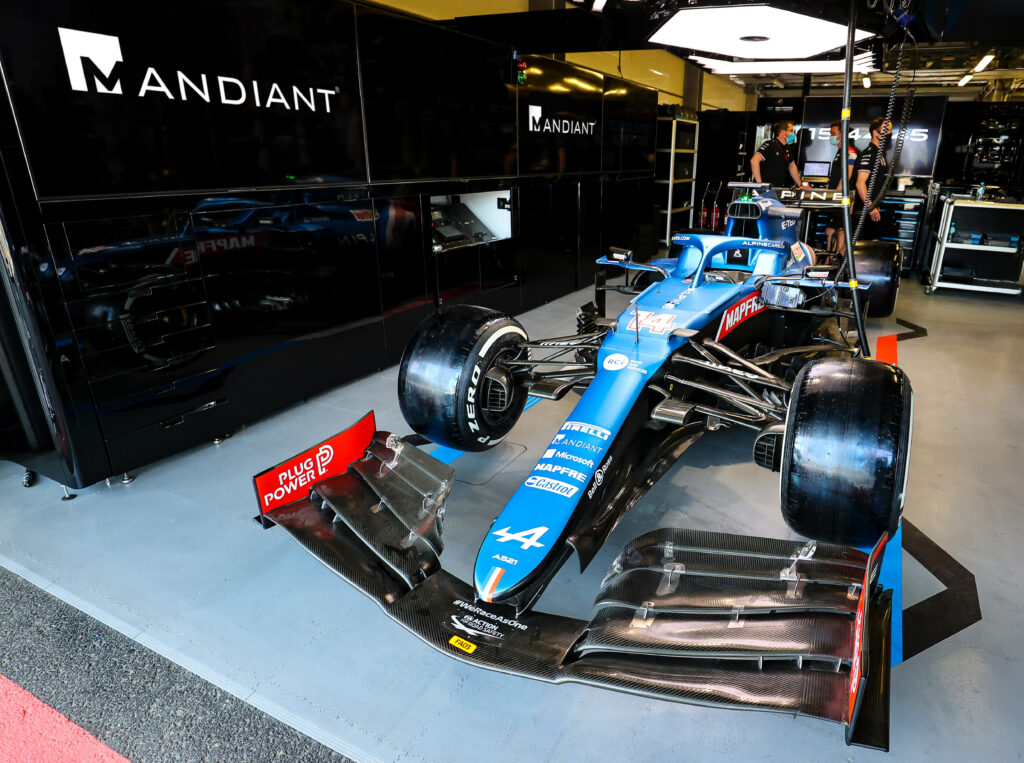
Data and analytics are now present in every sport and footballers or tennis players are monitored to understand how they can play better and more efficiently, but the level of real-time analysis of data that takes place in Formula 1 during a race is simply unthinkable for other sports. A racecar deploys more than 100 sensors onboard and produces 900GB of data each weekend, those data are the keys to unlock performance.
Cybersecurity is another big topic. Of course, every sports organisation has a certain level of secret data that they want to protect but in most cases, those data are related to the business side rather than the sporting one. Differently, the tyres' degradation level or the operating temperatures of the brakes are the kind of data that in Formula 1 defines who wins and loses.
Artificial Intelligence is also something that is increasing its presence in the sports environment, but Formula 1 teams have been working on it for several years. During a race, a team can hear many radio communications also from other teams and extrapolating crucial information from these conversations can be a game-changer in terms of race strategy. But to do that quickly and while cars are going at 300 km/h, teams utilise AI systems. Are there other sports where technology plays such a big role? We don't think so.
The storytelling is then very authentic and the audience is the perfect one: in fact, 57% of fans are senior decision-makers and they are 49% more likely to work in an IT role than average, representing exactly the people to sell technological solutions to.
Additionally, more than 300 brands are involved in the sport and B2B opportunities are simply limitless.
So, what are you waiting for? At Drive, we are looking forward to speaking with you regarding the relationship between Formula 1 and technology brands.
This is original editorial content from Drive Sports Marketing, an agency specialising in Formula 1 sponsorship, Formula E sponsorship, MotoGP sponsorship, and WEC sponsorship.
Many times we have heard marketing executives saying the sports sponsorship was not the right tool for them because they could not measure the ROI. This statement couldn't be further from the truth and we have interviewed Samantha Lamberti (Managing Director, Nielsen Sports Southern Europe) to understand how analytical and measurable sports sponsorships are today.
What is the role of Nielsen and your team in motorsports?
Nielsen is the global leader in data analytics in the sports and sponsorship sector, including motorsport. Specifically, it helps to support and settle all sponsorship transactions, in particular, to calculate the return on investment of sponsorships and to understand how to maximize the sponsorship account. In particular, we support both the rights holders - the teams, Formula 1, MotoGP -, and the brands in understanding how, or where to invest or the type of investment to request through what is the sponsorship life-cycle.
In the last ten years, the concept and structure of sponsorships have changed a lot. What has changed in your approach and in the services you offer?
Nielsen Sports was born as a company that originally focused on media evaluation, but over the years the customer needs have evolved, and so we did. Over time, indeed, focal points such as the impact of sponsorships on the sales of the sponsoring brand have gained increasing importance. Just last year we released a solution - ROSI 2.0 - which, by leveraging on the know-how of Nielsen, provides the ability to estimate the outcome both predictively and post-event. Nielsen has a Marketing Effectiveness based department that deals with Marketing Mix Modeling for big brands. By using this internal expertise and combining it with Nielsen Sports’ specific data and expertise, we were able to create a model that is able to quantitatively determine the impact on sales and brand equity a brand generates from one or more sponsorships.
Between sports properties and sponsors, who tend to be most interested in these innovative services?
Speaking of sport in general, there are many interested customers: from federations to teams, to organizers of mega-events, to brands that previously did not include sponsorships in their analyzes. The requests grow in number and depth when we talk about sponsorships of significant size. However, we are still in an initial phase where the market needs more checks, but at the same time requires more strictness in understanding the return on investments generated by sponsorships.
Taking a step back and returning to a stage prior to signing the sponsorship, Nielsen is also specialized in sports property support work to create a data-driven business strategy. Can you describe how this step takes place?
Nielsen supports the rights holders throughout the sponsorship cycle: starting from the analysis of the fans, for example, using our database, we build models capable of associating the categories/brands that would benefit the most from the sponsorship, always keeping in mind key data such as viewership, fans’ propensity to buy, brand’s investment capacity.
A very recent trend in sports sponsorships is the esports world. How do you manage it?
We have a department dedicated to esports which, in addition to providing the same services used by traditional sports, also defines the opportunities of joining this sector both for the brand and for the right holders. In particular, we are able to contextualize esports with traditional sports and to explain the main differences to those who still don’t know much about this field.
This is original editorial content from Drive Sports Marketing, an agency specialising in Formula 1 sponsorship, Formula E sponsorship, MotoGP sponsorship, and WEC sponsorship.